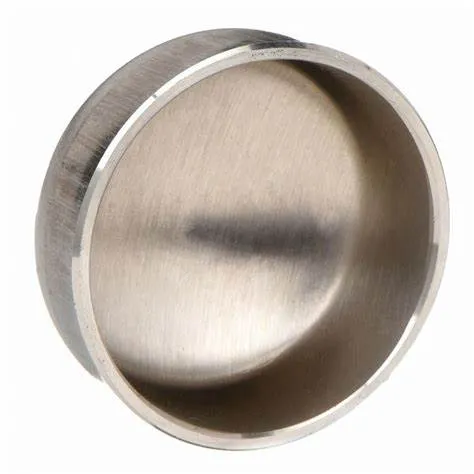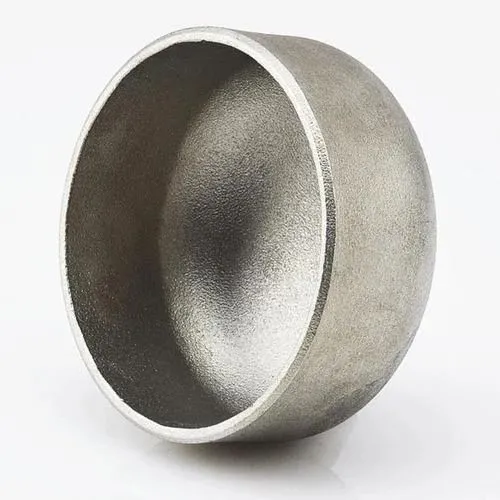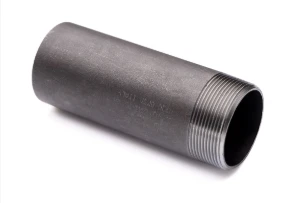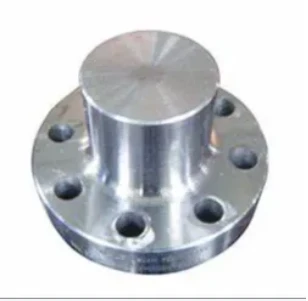Ko te JIS B2311 he Paerewa Ahumahi Hapanihi e kapi ana i nga taputapu paipa reke, tae atu ki nga potae e whakamahia ana i roto i nga punaha paipa. Ko nga potae weriweri he kaupapa hei kati i te pito o te putorino, he hiri hei aukati i te rerenga, i te poke ranei. Anei he kupu whakataki mo te JIS B2311 nga potae weriweri:
- 1. JIS B2311 Standard:
- - Ko te paerewa JIS B2311 e whakaatu ana i nga whakaritenga mo te hoahoa, te rahi, nga rawa, te hangahanga, me te whakamatautau i nga taputapu reke-fehokotaki, tae atu ki nga potae, i roto i nga punaha paipa.
- - Ko te paerewa ka whakarite kia tutuki nga potae i hangaia i runga i nga paerewa JIS ki nga paerewa kounga me te hototahi ki etahi atu waahanga paipa.
- 2. Potae Reke-Welding:
- - Ko te potae reke, e ai ki a JIS B2311, he taputapu i hangaia hei uhi me te hiri i te pito o te paipa kia mau, hei tiaki me te pupuri i te pono o te punaha paipa.
- - Ka whakamahia nga potae ki nga waahi e hiahia ana te pito paipa kia kati, mo te wa poto, mo te wa poto ranei, kia kore ai e pakaru, kia poke, kia mutu ranei te punaha.
- 3. Rauemi me te Hanga:
- - Ko nga potae potae i raro i nga korero a JIS B2311 e waatea ana i roto i nga momo taonga penei i te waro maitai, te kowiri tira, me te rino whakarewa hei whakatutuki i nga whakaritenga tono rereke.
- - Ko enei potae ka hangaia ma te whakamahi i nga tikanga hanga paerewa hei whakarite i te hononga kaha me te kore e pakaru i te wa e herea ana ki te pito o te paipa.
- 4. Tono me nga Painga:
- - Ka kitea e nga potae weriweri he tono i roto i nga momo ahumahi, tae atu ki te hinu me te hau, nga tikanga matū, nga tipu whakamaori wai, me etahi atu mea me kati nga pito paipa.
- - Ka whakamarumaru nga potae ki nga pito paipa mai i nga huānga o te taiao, te aukati i te poke, me te pupuri i te ma me te tapatahi o te punaha paipa.
- 5. Tāuta me te Welding:
- - Ko nga tikanga whakauru tika, tae atu ki te whakatikatika tika, te whakarite i te pito paipa, me nga tikanga whakapiri, he mea tino nui ina whakauru nga potae reke-fehokotaki kia pai ai te hiri me te hiri.
- - He tikanga noa te welding mo te whakapiri i nga potae ki nga paipa, kia mau ai te kati me te katinga pumau e taea ai te pehanga, te rerekee o te pāmahana, me te rere o te wai i roto i te punaha.
- Hei whakarāpopototanga, ko te JIS B2311 he mea tino nui te whakamahi i nga punaha paipa hei hiri me te tiaki i te mutunga o nga paipa. Ko enei potae e rite ana ki nga whakaritenga paerewa hei whakarite i te kounga, te pono, me te hototahi i roto i nga tono ahumahi e tika ana kia kati te paipa me te whakamarumaru.
What Is a Butt Welding Cap and How Is It Used in Industrial Piping?
In industrial piping systems, end-of-line sealing and branch closures require robust solutions. A butt welding cap serves as a critical component for terminating pipes securely. By providing a seamless, welded closure, this fitting maintains system integrity, prevents leaks, and supports compliance with industry standards.
What Is a Butt Welding Cap?
A butt welding cap—also called a pipe end cap or buttweld end cap—is a round fitting designed to close off the end of a pipe. It’s manufactured to match the pipe’s outer diameter and schedule, with either a hemispherical or flat face. To install, both the pipe end and cap are beveled to form a V‑groove, enabling full‑penetration, fusion welds. Common materials include carbon steel, stainless steel, nickel alloys, and other engineered grades, chosen to satisfy pressure, temperature, and corrosion‑resistance requirements.
How Is Butt Welding Cap Used in Industrial Piping?
Butt welding caps find application across oil & gas, petrochemical, power generation, water treatment, and general process industries for both permanent and temporary closures. During hydrostatic testing, technicians install caps to seal off sections of piping while monitoring for leaks. In new construction or retrofit projects, caps terminate branch lines, future tie‑in spools, or dead‑end mains until system expansion. Welders prepare each joint by cleaning and beveling surfaces, aligning the cap precisely, and executing a root pass followed by filler passes per the qualified Welding Procedure Specification (WPS). Post‑weld heat treatment and non‑destructive examination (NDE)—such as radiography or ultrasonic testing—verify weld integrity and compliance with ASME B16.9 and related standards. Additionally, temporary caps enable safe isolation during maintenance, allowing for segment testing and dewatering under regulatory protocols.
Benefits and Best Practices
Butt welding caps offer a smooth‑bore transition that minimizes flow disruption and stress concentration. Their full‑penetration welds deliver exceptional structural strength and leak resistance. To optimize performance, engineers should:
Select caps with matching material grades and wall thicknesses
Adhere to proper bevel angles and joint fit‑up tolerances
Follow qualified WPS protocols rigorously
Consider cladding or protective coatings in corrosive environments to extend service life
Regular inspection and thorough documentation ensure long‑term reliability and safe operation under demanding conditions.
Butt welding caps are indispensable components for achieving durable, leak‑proof pipe terminations in a wide range of industrial applications.
Butt Welding Cap FAQs
What is a butt welding cap?
|
What materials are commonly used?
|
What standards govern butt welding caps?
|
How are butt welding caps installed?
|
Where are butt welding caps typically used?
|
What are the advantages of threaded caps?
|
















